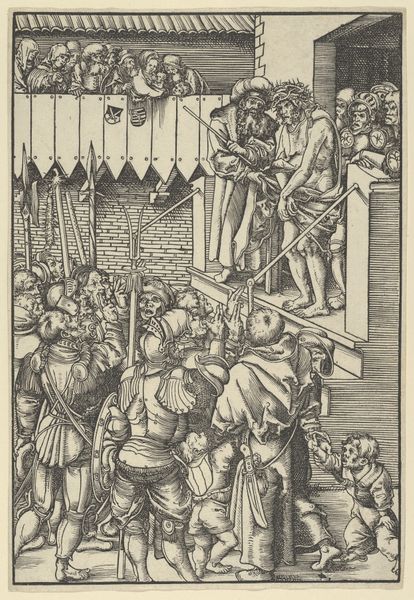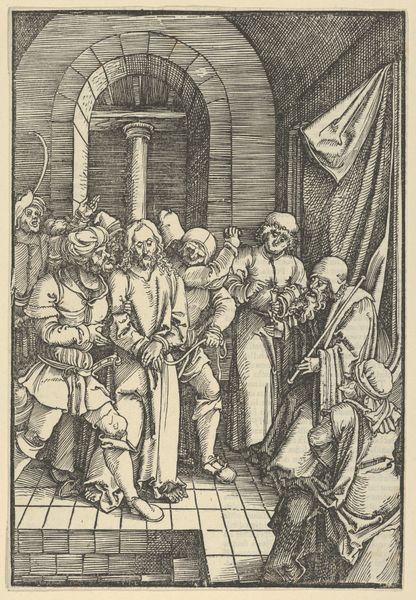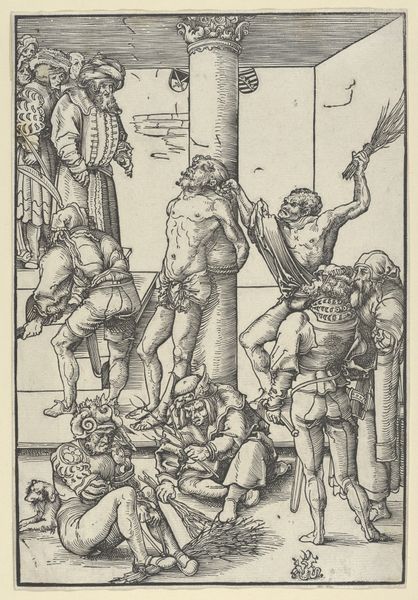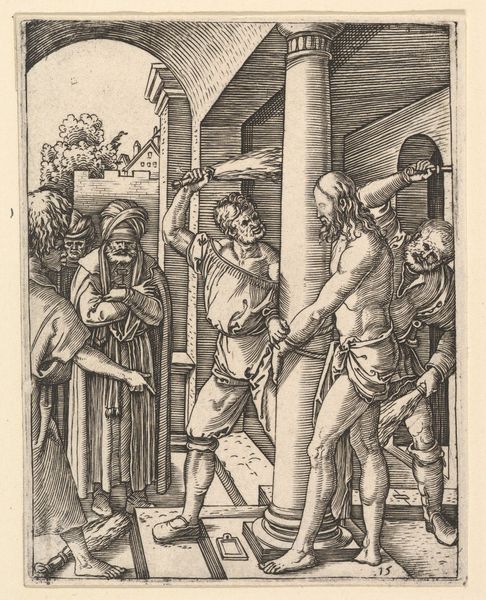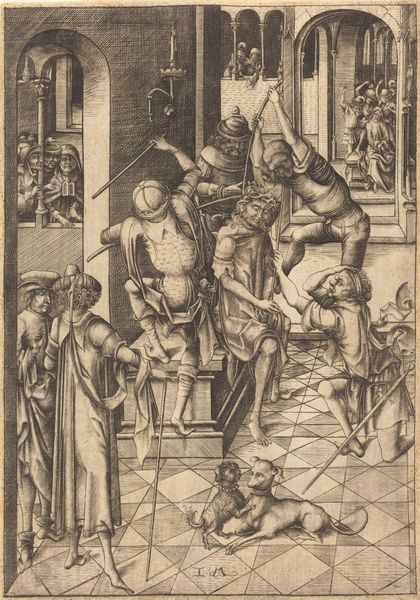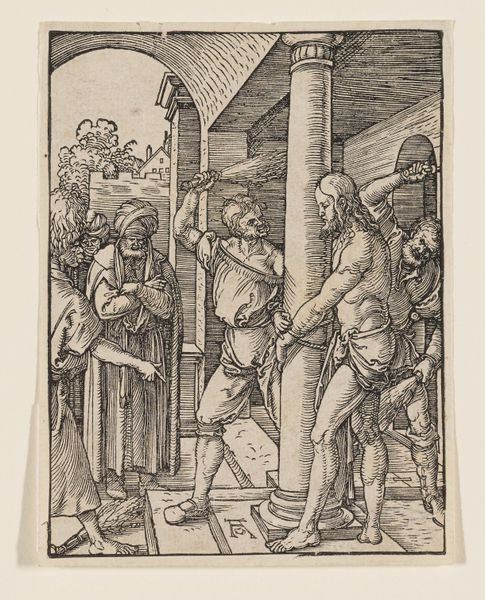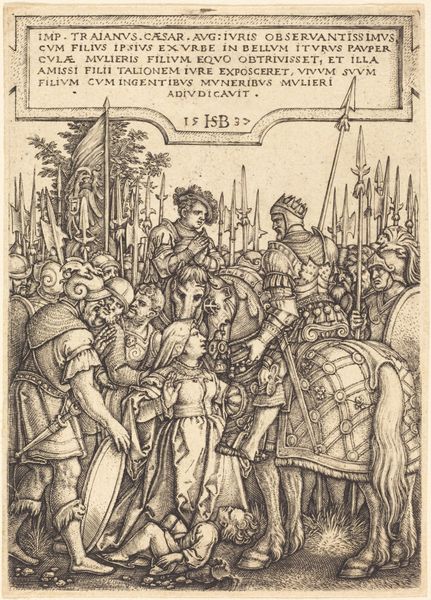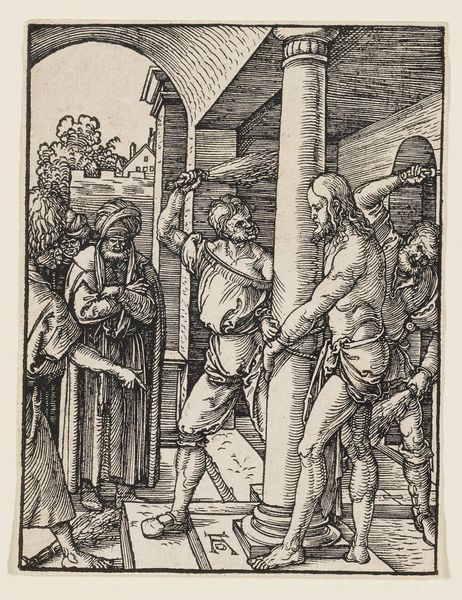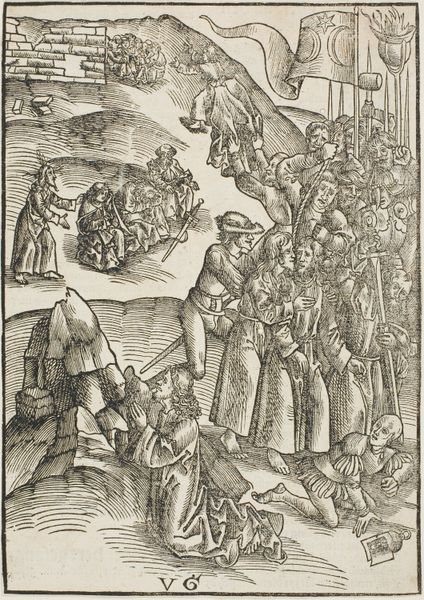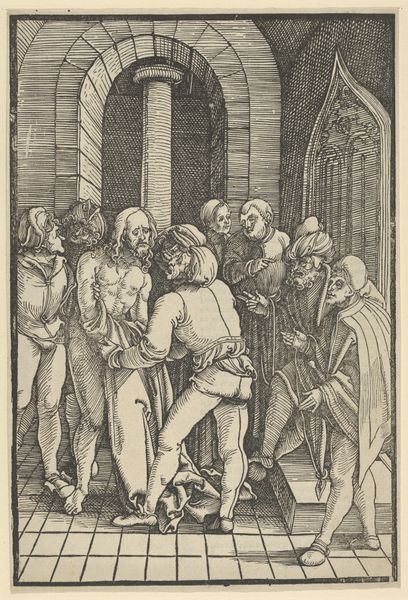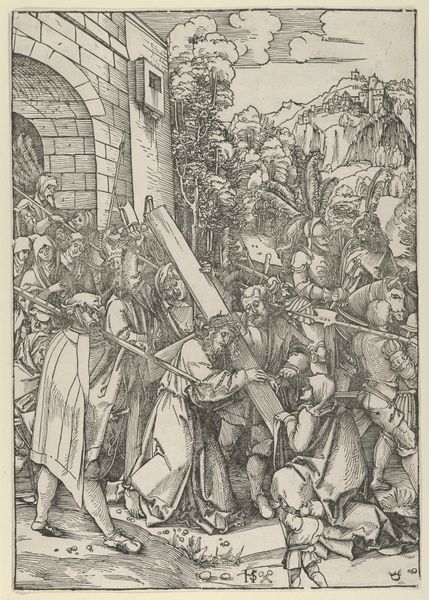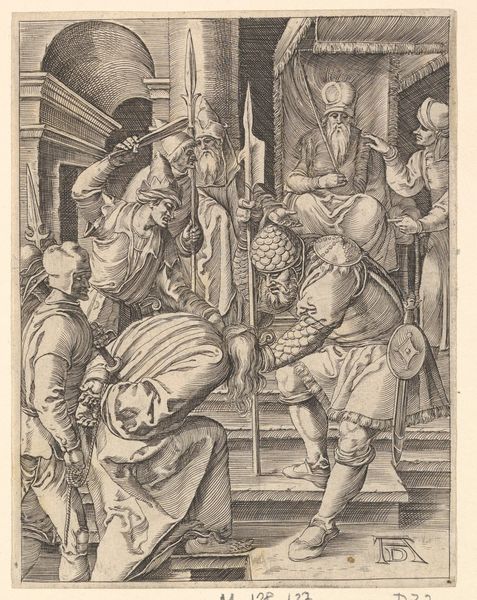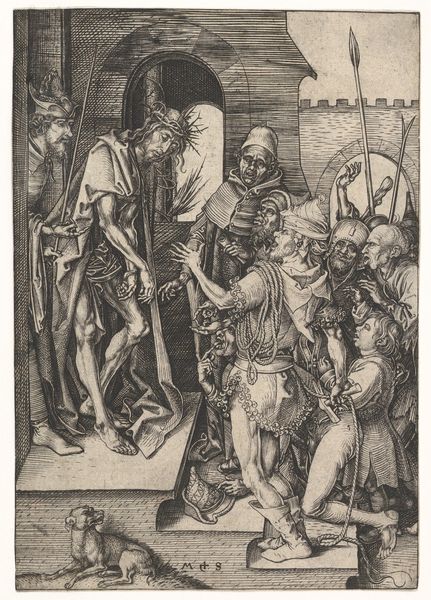
The Beheading of St.John the Baptist 1472 - 1553
0:00
0:00
drawing, print, engraving
#
drawing
#
narrative-art
# print
#
figuration
#
history-painting
#
northern-renaissance
#
engraving
Dimensions: Sheet: 12 13/16 × 9 1/16 in. (32.5 × 23 cm)
Copyright: Public Domain
Curator: This engraving, attributed to Lucas Cranach the Elder, illustrates "The Beheading of St. John the Baptist." Its date of creation falls somewhere between 1472 and 1553. You can find it here at The Metropolitan Museum of Art. Editor: The immediate impact is visceral. It's incredibly graphic for such a precise medium; the density of the lines somehow intensifies the violence of the subject. Look at how much detailed texture is used in a limited monochromatic medium. Curator: Yes, the symbolic weight is almost oppressive. We have John, whose decapitation represents truth silenced, a martyrdom that echoes through centuries. Consider the political climate in which Cranach was working - these images held potent subversive possibilities during periods of religious tension. Editor: It's all meticulously constructed using engravings – the physicality is very present when looking at the etched plates and how they translate to paper through intense pressure. Look at the cross hatching to define form; notice the variations in line weight create texture to indicate cloth or steel. Curator: The composition further directs our reading. The raised platform signifies authority and execution; while figures lurk above as though spectators to historical fate—they are observing an important message delivered over time! This evokes concepts of sacrifice and the implications of moral righteousness. Editor: You can almost feel the force exerted. It makes you consider who actually held the plates. Were these created in the context of workshop, printed en masse? What was the nature of labor for artisans reproducing images? Curator: A valid observation, given the multiple existing copies. This distribution points to the desire to proliferate religious ideas during that historical moment. What persists, even after all this time, is how iconic images shape and transport meaning over eras. Editor: Right, and understanding how the materiality facilitated widespread distribution sheds a light on the intersection between craftsmanship and ideological movements within historical cultures! Curator: Precisely, looking at artwork across eras can provide such perspective into cultural concerns of the past; as well as their effect on subsequent generations. Editor: I am left wondering how this detailed craftwork continues echoing with symbolic potency.
Comments
No comments
Be the first to comment and join the conversation on the ultimate creative platform.
